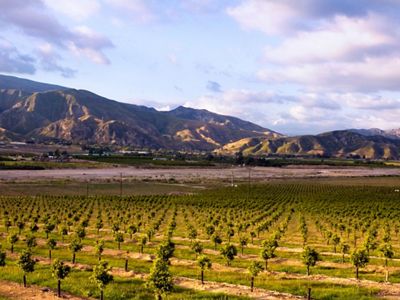Overview
The Nature Conservancy has made major strides in protecting one of the most important and intact river systems in Southern California. The Santa Clara River is a vital source of drinking water for the local community, as well as a key resource for many prosperous farms. It also offers some of the last riverside and freshwater habitat for wildlife in the bustling Los Angeles-Ventura region. Despite its local and regional ecological importance, the lower Santa Clara River is threatened by invasive non-native vegetation, intense levee building, poor water quality, conversion from agriculture to urban land uses and increasing development in the floodplain. In 2005, American Rivers designated the Santa Clara River as one of the most threatened rivers in the nation.
The Stakes Are High
Starting high up in the Angeles National Forest in Los Angeles County, flowing down into Ventura County and into the estuary at McGrath State Beach, the Santa Clara River and its tributaries are surrounded by more than 12 million people. As the population soars, urban sprawl bears down on the river and its watershed, threatening:
- The supply and quality of the region’s freshwater, including precious groundwater reservoirs that are fed by the river;
- The farmers whose fields and groves line the river and surrounding lands, making a healthy contribution to the local economy and regional identity; and
- The plants and animals within the watershed that rely on the extensive habitat of the river system, including a staggering 16 species within one mile of the mainstem of the river that are federally and/or state listed as threatened or endangered.
Adding to the pressure, 95% of Southern California’s river and wetland habitat has already been lost. In fact, this is one of the last rivers in Southern California that remains relatively natural. Other major rivers in the region, including the Santa Ana, San Gabriel and Los Angeles, have been reduced from lush, flowing rivers to largely concrete channels with very little wildlife habitat.







